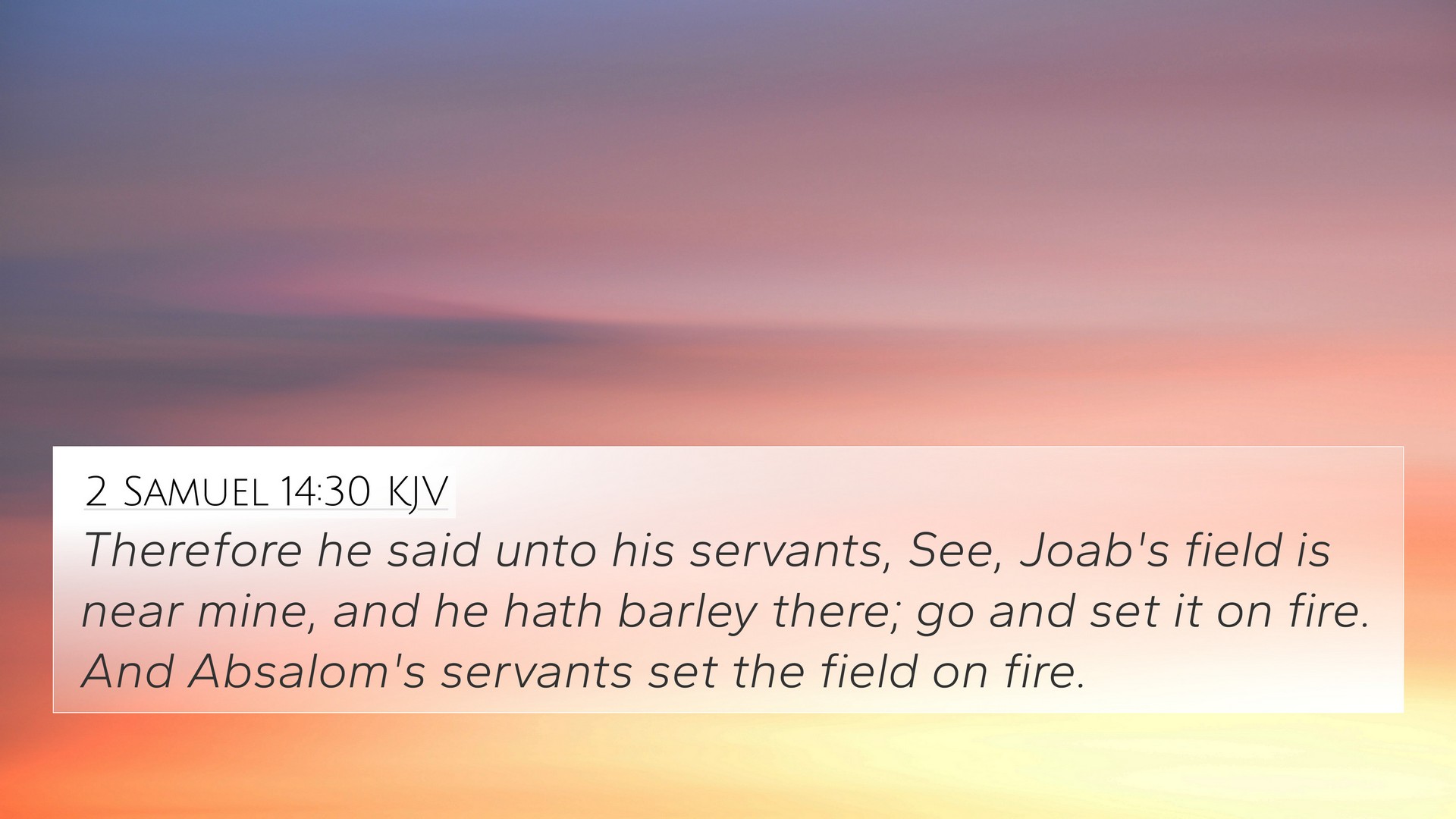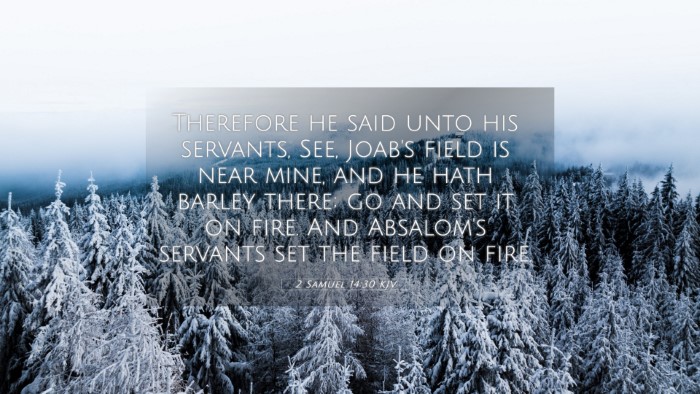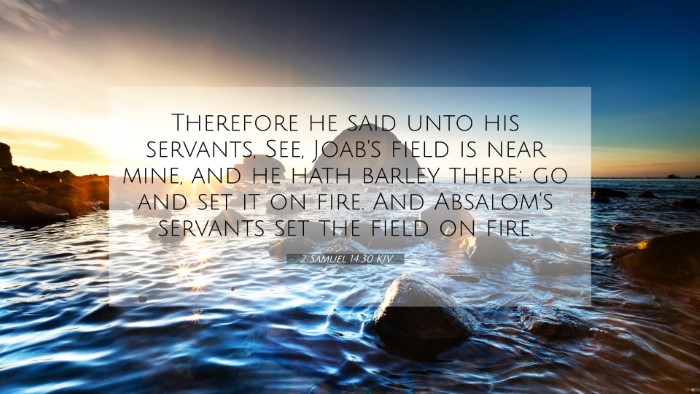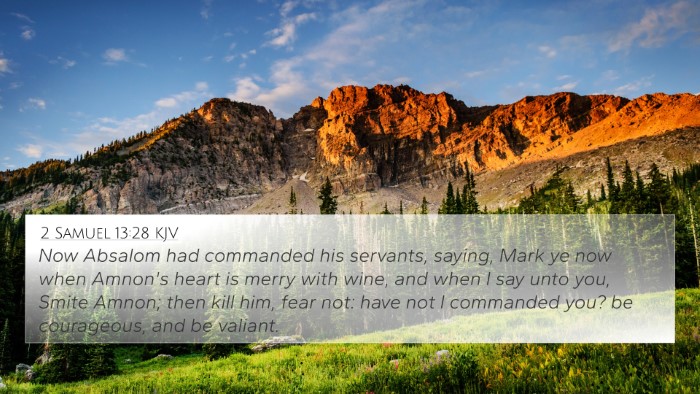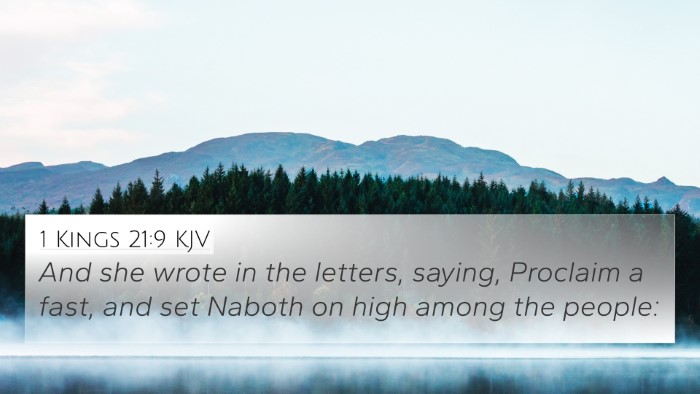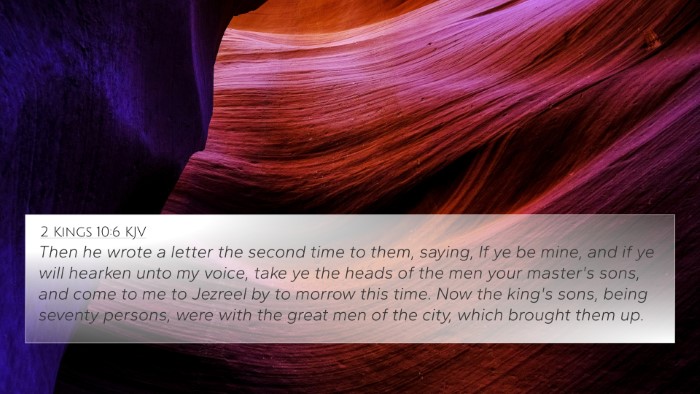Understanding 2 Samuel 14:30
Verse: "Therefore he said unto his servants, See, Joab's field is near mine, and he hath barley there; go and set it on fire." 2 Samuel 14:30 (KJV)
Summary of 2 Samuel 14:30
This verse captures a moment of significant tension and the unfolding of personal vendettas, particularly focusing on Absalom and Joab. The phrase illustrates Absalom's calculated approach to provoke Joab, leading to further conflicts, rooted in deep familial and political strife within the house of David.
Commentary Insights
This verse has been explored through various public domain commentaries, each offering insights into the actions and motivations behind them.
- Matthew Henry: He points out that Absalom’s actions are reflective of his overarching desire for recognition and challenge to Joab's authority. Henry interprets this as a strategic move aimed at drawing attention and eliciting a response from Joab, signaling the depths of Absalom’s ambitions.
- Albert Barnes: Barnes emphasizes the significance of Absalom’s decision to burn Joab’s barley field as a desperate measure to get his attention. He suggests that this action illustrates the lengths to which Absalom would go in order to assert himself and communicate his complaints against Joab’s neglect.
- Adam Clarke: Clarke interprets the burning of the field as both an act of aggression and a form of manipulation. He presents Absalom as being shrewd yet reckless, indicating that this act was not merely personal vengeance but a calculated effort to reclaim his position and influence within the royal court.
Cross-References
2 Samuel 14:30 can be examined through various cross-references within the Bible that highlight themes of rebellion, familial conflict, and the severity of actions taken to regain favor or attention. Here are some relevant verses:
- 2 Samuel 13:28-29: This passage relates to Absalom’s growing resentment toward his brother Amnon, illustrating the consequences of familial strife.
- 2 Samuel 14:1-3: Discusses Joab's role in orchestrating Absalom's return to Jerusalem, providing context for the tensions that follow.
- 2 Samuel 15:1-6: This sequence details Absalom's conspiracy against David, showing the culmination of his ambition.
- 1 Kings 2:28: Reflects on Joab's eventual fate, illustrating the long-lasting implications of these earlier conflicts.
- Matthew 5:22: Adds a moral dimension to the text, emphasizing the seriousness of anger leading to harm against others.
- Proverbs 30:33: A proverb discussing the consequences of provocation, similar to the results of Absalom's actions against Joab.
- Galatians 6:7: Highlights a principle of sowing and reaping, applicable to the actions of both Joab and Absalom.
Thematic Connections
In analyzing 2 Samuel 14:30, several themes emerge that connect it to the broader narrative of the Bible:
- Familial Conflict: The verse is a part of the larger theme of familial strife that runs through 2 Samuel, illustrating the natural conflicts that arise in royal families.
- Ambition and Rebellion: Absalom's actions are driven by ambition and a desire for power, which resonates throughout Biblical texts discussing the consequences of rebellion against authority.
- Consequences of Anger: The strife highlighted in this verse echoes the warnings against anger and vengeance found in both Old and New Testament teachings.
Tools for Bible Cross-Referencing
To better understand the connections between Biblical texts, various tools can be employed, including:
- Bible Concordance: A valuable resource for locating verses and their cross-references.
- Bible Cross-Reference Guide: Provides systematic approaches to linking verses across different books.
- Cross-Reference Bible Study: Engages in detailed study methods to uncover thematic connections in scripture.
Conclusion
2 Samuel 14:30 serves as a powerful reminder of the complexities of human emotion and ambition, capturing the dramatic tension inherent in familial relationships. The insights from public domain commentaries enrich the understanding of this verse while the cross-references highlight the broader Biblical narrative concerning rebellion, authority, and consequences.
Keyword Integration
The various themes and connections drawn from 2 Samuel 14:30 open avenues for further exploration through Bible verse cross-references, allowing deeper insights into connections between Bible verses. This investigation into linking Bible scriptures informs comparative Bible verse analysis that enriches personal study and the exploration of Bible verses that relate to each other. Understanding and interpreting scriptures through cross-referencing Biblical texts provides a comprehensive picture, aligning tools for study with practical application.
